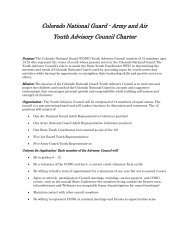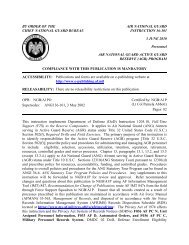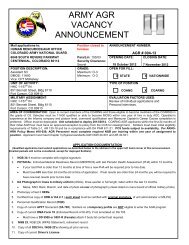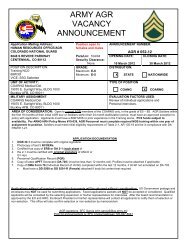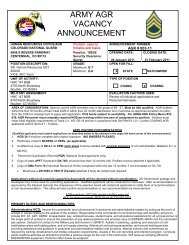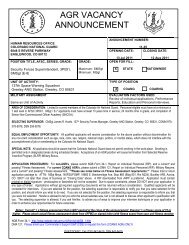Prosecuting Alcohol-Facilitated Sexual Assault - National District ...
Prosecuting Alcohol-Facilitated Sexual Assault - National District ...
Prosecuting Alcohol-Facilitated Sexual Assault - National District ...
You also want an ePaper? Increase the reach of your titles
YUMPU automatically turns print PDFs into web optimized ePapers that Google loves.
NDAA<br />
THREE-STEP PROCESS<br />
that makes the victim appear more credible, present that witness before<br />
the victim.With this approach, when the jurors hear the victim’s testimony,<br />
they will already be inclined to find her credible. For example,<br />
consider starting with a witness who saw the victim immediately after<br />
the incident in a highly emotional state or a medical witness who treated<br />
an injury. 81<br />
Direct Examination of the Victim<br />
The myth of “real rape” portrays the rapist as a stranger to the victim.<br />
However, in reality, most victims know their rapists. 82 As a result, it is<br />
common for a victim of nonstranger rape to be with the defendant voluntarily<br />
at the time of the rape. In fact, at least “eighty percent of all sexual<br />
assaults occur during social interaction, typically on a date.” 83 Prior to<br />
the rape, the defendant was not a stranger, so it was not unreasonable to<br />
trust him. As a result of trusting the defendant, the victim did not recognize<br />
the danger until it was too late. Prosecutors must show the jury why<br />
the victim initially trusted the defendant and how he was able to trick<br />
her and take advantage of her trust. At what moment did the victim recognize<br />
that she was in danger? Very often, victims do not recognize the<br />
danger until it is too late because they perceive the defendant to be safe. 84<br />
At trial, first have the victim explain who the defendant appeared to be,<br />
and then explain who he really was. Ask her to describe for the jury the<br />
moment she realized that she was in danger and that he was going to<br />
rape her. Ask her to describe any changes in his demeanor, speech, or<br />
behavior.The contrast will show the jurors that although the defendant<br />
did not initially fit their stereotype of a “real” rapist, he is, nevertheless,<br />
guilty. Show the jury that it was the defendant who tricked the victim<br />
into believing that he was someone who would not hurt her. Argue that<br />
the defendant became a stranger to the victim when he raped her.<br />
In rape cases, inconsistencies in the victim’s statements and testimony<br />
tend to take on gigantic proportions. Members of the public who are<br />
unwilling to admit that they believe that women lie about rape will often<br />
freely admit that they would hesitate to convict a defendant of rape<br />
without some form of corroboration, even though it is not required for a<br />
conviction. Prosecutors must review all victim statements, identify any<br />
27





